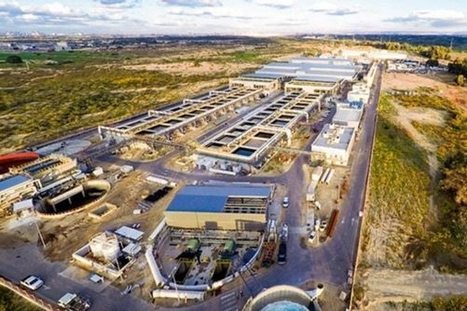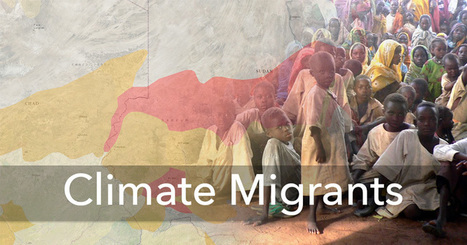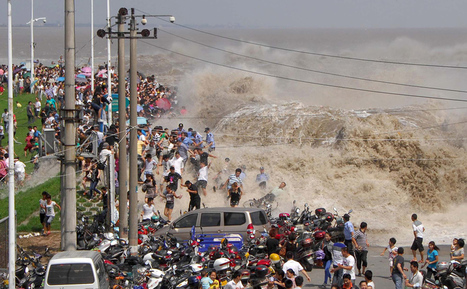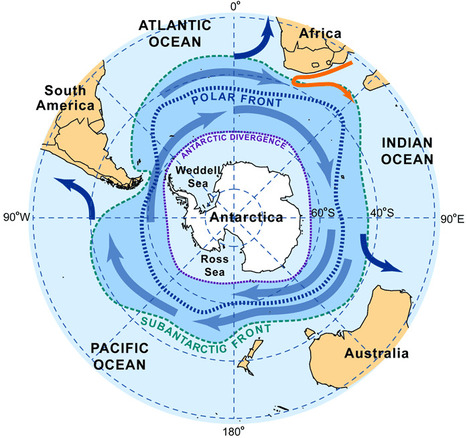The Western U.S. is no stranger to droughts. But this year's is one of the worst yet. Here's a historical look at U.S. droughts since 1999.
Research and publish the best content.
Get Started for FREE
Sign up with Facebook Sign up with X
I don't have a Facebook or a X account
Already have an account: Login
 Your new post is loading... Your new post is loading...
 Your new post is loading... Your new post is loading...
Ivan Ius's curator insight,
February 5, 2017 5:03 PM
Geographic Concepts: Spatial Significance, Geographic Perspective
brielle blais's curator insight,
April 1, 2018 4:16 PM
This connects to the physical geography of Israel as it was once incredibly dry, facing a decade long drought. This ruined the agriculture sector of their economy as well, along with changing the people's way of life. However, desalination has saved the country, and Israel really had no other choice. Instead, the country is now a water giant, and has an overabundance through new technologies.
Ivan Ius's curator insight,
December 31, 2016 1:19 AM
Geographical Concepts: Spatial Significance, Patterns and Trends,
|
Ivan Ius's curator insight,
January 22, 2017 7:38 PM
Geography Concepts: Spatial Significance, Patterns and Trends, Interrelationships
Katie Kershaw's curator insight,
April 24, 2018 12:22 PM
This is slightly embarrassing to admit, but I have never heard of the Southern Ocean. I think it is because, as mentioned in class the other day, we do not talk about the Southern Hemisphere very often. When looking a globe this entire ocean is on the bottom and pretty much out of sight. I thought that it was interesting that the creation of this ocean was created within my lifetime because all of the rest of the world’s oceans are well documented throughout history. Even though the water in the Southern Ocean has been there just as long as the other oceans, it hadn’t been designated as an ocean. I think another reason that I haven’t heard much about the Southern Ocean is because it doesn’t really have any direct impacts on Americans. All of our trade routes avoid this area of the world, we don’t have any landclaims within the ocean, and very few Americans have actually gone to Anarctica. This article also talks about the boundaries and the conflict regarding how far north the boundaries of the ocean would be. Most members of the IHO supported the boundary being at 60 degrees. However, 7 countries pushed to have the boundary set at 50 degrees. The reason most countries supported the 60 degree boundary is because it doesn’t add any land outside of Anarctica to the ocean. Although this article doesn’t state which countries wanted the boundary at 50 degrees, I am guessing its countries with land very far south, like Argentina, Chile, Australia, and maybe South Africa. This would allow them control over the Southern Ocean that they can’t get with the current boundaries. It is interesting that it took until 2002 for the point to be raised that the Southern Ocean is district enough from the other oceans, that it should be considered a separate ocean.

Zavier Lineberger's curator insight,
May 3, 2018 11:25 AM
(Oceania) Geography experts now claim the waters around Antarctica will join the Atlantic, Pacific, Indian, and Arctic as the fifth ocean. Almost every member of the International Hydrographic Organization declared the existence of the South Ocean, which extends to 60° S latitude and is double the size of the United States. While it might seem trivial, the Southern Ocean has the most powerful water current, a different circulation, and a unique ecosystem, marking it separate from other bodies of water.

K Rome's curator insight,
October 6, 2018 7:30 PM
The Atlantic, Pacific, Indian, and Artic as an American student growing up those were the Oceans that I grew up learning about. So to see an article talking about the Southern Ocean comes as kind of a surprise. We learn as young American students about "Atlantic trade" or our West Coast with "Pacific Trade" we as young students learn about the mysterious Indian Ocean and the unattainable Artic Ocean, but for some reason the Southern Ocean has been left out. The Southern Ocean as the article explains is the 5th and newest Ocean. Ocean scientist thought it was necessary to name the the body of water south of the Pacific but north of the Artic. While it might not seem that important to some it is key to identify with areas. When we discuss Atlantic trade for the most part in the United States we know we are discussing trade with the Europeans or on our East Coast. When discussing Pacific trade we understand that to be West Coast and probably dealing with China or other Asian countries. As an Australian resident or student they grow up learning about this key body of water to them. They can use it to identity where they are and where they are going. We can also use the body of water to discuss different weather pattern and effects on the countries in Oceania region of the world. An interesting read if you want to learn more about our forgotten 5th Ocean.

GTANSW & ACT's curator insight,
July 6, 2016 1:24 AM
Impact of overfishing and ecosystem disruption on marine environments |



























